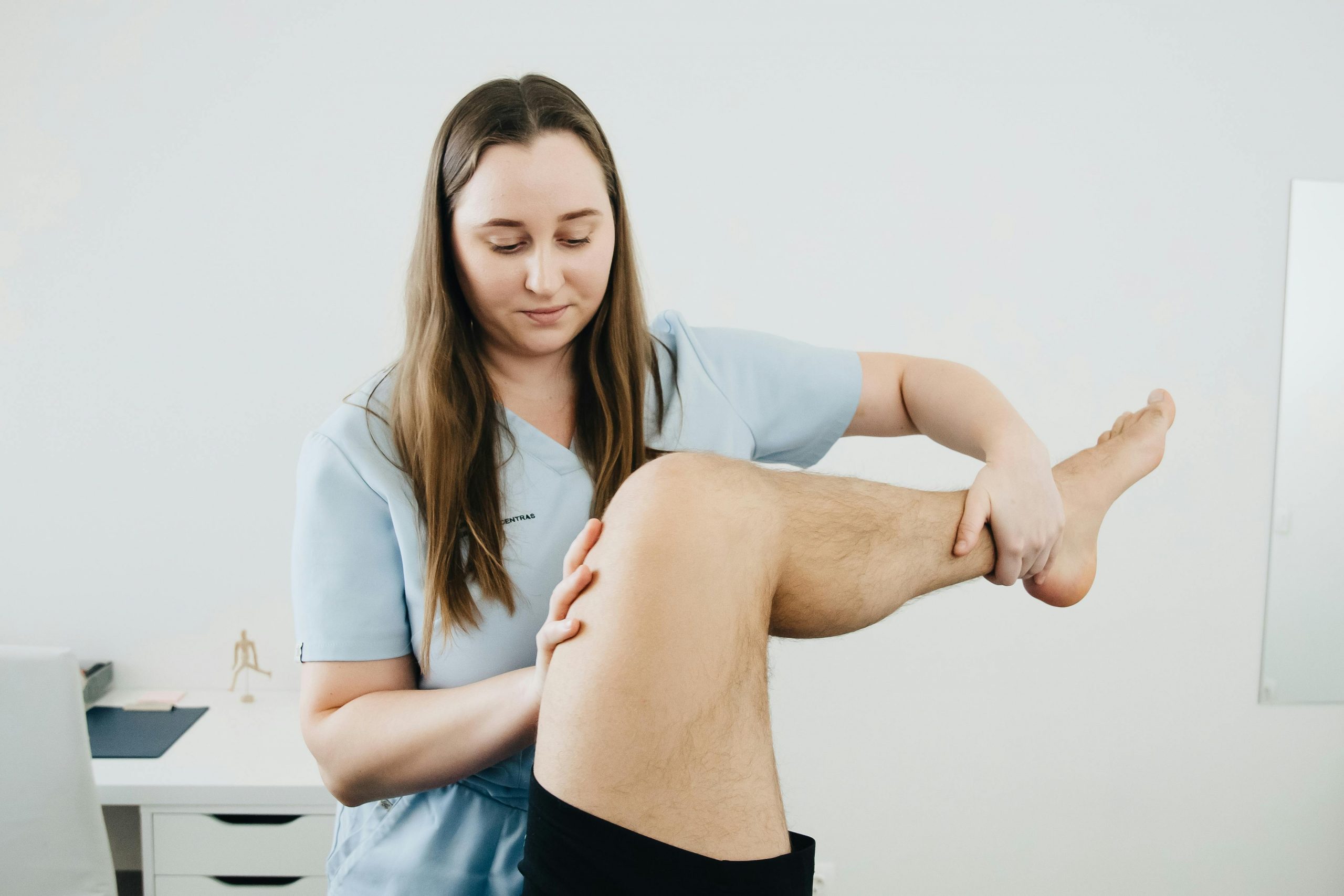
Highlights
- Customized treatment plans address the specific needs and conditions of each patient.
- Tailored interventions accelerate recovery and improve long-term outcomes.
- Personalized care reduces the risk of re-injury and chronic complications.
- Holistic approaches combining therapy, exercise, and lifestyle changes enhance overall wellness.
- Regular monitoring and adjustments ensure treatment stays effective throughout recovery.

Injuries are an unfortunate reality for many individuals, whether they arise from sports, accidents, or everyday activities. While some injuries are minor and heal naturally, others require professional care to restore function, manage pain, and prevent long-term issues. The challenge is that no two injuries are exactly alike. Factors such as severity, location, underlying health conditions, and personal lifestyle all influence recovery.
This is where customized treatment plans come into play. Unlike generic approaches, tailored treatment plans are designed to address the unique needs of each patient, taking into account the type of injury, the individual’s health, and their specific recovery goals. These plans not only accelerate healing but also minimize the risk of future injuries, improve quality of life, and promote overall wellness.
In this article, we’ll explore the concept of customized treatment plans, discuss their benefits, examine their key components, and explain how they help patients recover from injuries more effectively.
Understanding Injuries and Their Variability
Not all injuries are the same, and understanding their differences is key to effective recovery. Injuries can be classified into two main categories: acute and chronic/overuse.
- Acute Injuries: These occur suddenly due to a specific event, such as a fall, collision, or twisting motion. Examples include ankle sprains, fractures, or shoulder dislocations.
- Overuse Injuries: These develop gradually over time from repetitive stress on a particular joint, muscle, or tendon. Examples include tendinitis, stress fractures, and repetitive strain injuries.
Several factors influence the severity of an injury and its recovery timeline:
- Age: Younger individuals often heal faster, while older adults may experience slower recovery.
- Fitness Level: Individuals with stronger muscles and better flexibility may recover more quickly.
- Medical History: Chronic conditions such as diabetes or previous injuries can complicate recovery.
- Lifestyle Habits: Sleep, nutrition, stress, and activity levels all impact healing.
Because each injury is unique, a standardized treatment plan may not provide the best results. A customized plan allows healthcare professionals to design interventions specific to the patient’s needs, maximizing recovery potential.
What Are Customized Treatment Plans?
A customized treatment plan is a structured, patient-specific approach to healing. It integrates assessment, goal-setting, therapy, and continuous monitoring to create a roadmap for recovery.
Key features of a customized plan include:
- Individualized Assessment: Understanding the nature of the injury, overall health, and lifestyle factors.
- Specific Goals: Short-term objectives, like reducing pain, and long-term goals, such as restoring full mobility.
- Tailored Therapies: Selection of therapies and interventions suited to the patient’s injury type, severity, and personal preferences.
- Monitoring and Adjustment: Continuous evaluation ensures the plan adapts to the patient’s progress or setbacks.
- Patient Education: Teaching techniques and exercises to support recovery and prevent re-injury.
By addressing each patient’s unique needs, customized treatment plans often yield better outcomes than generic approaches.
Benefits of Customized Treatment Plans
Faster Recovery
Customized treatment plans target the root cause of the injury rather than merely treating symptoms.
- Targeted Therapies: Specific exercises, manual therapy, or chiropractic adjustments focus directly on affected areas.
- Optimized Timing: Interventions are scheduled based on the healing phase, ensuring the right treatment at the right time.
- Case Example: A runner with a mild hamstring strain might receive soft tissue therapy combined with a progressive stretching regimen, accelerating return to training compared to a one-size-fits-all protocol.
Reduced Risk of Re-Injury
A personalized plan strengthens weak areas, corrects movement patterns, and reduces stress on vulnerable joints.
- Strengthening Exercises: Focused on supporting muscles to protect injured areas.
- Postural Corrections: Aligning the spine and limbs to reduce undue stress.
- Technique Adjustments: Modifying activity or movement patterns to avoid recurrence.
Pain Management
Chronic pain can hinder healing and reduce quality of life. Customized treatment plans address pain with precision.
- Drug-Free Approaches: Manual therapy, chiropractic adjustments, and targeted exercises help manage pain without over-reliance on medication.
- Multi-Modal Therapy: Combining therapies such as massage, heat/cold treatment, and stretching for optimal results.
- Ongoing Evaluation: Adjusting techniques or intensity based on individual response ensures effective pain relief.
Holistic Healing
Recovery is not just physical; it also involves mental and lifestyle factors.
- Lifestyle Integration: Nutrition, hydration, and sleep habits are included in the plan.
- Mental Health Support: Mindfulness, stress management, and counseling may be recommended.
- Enhanced Overall Well-Being: Patients often report better mood, energy, and confidence throughout recovery.
Key Components of a Customized Treatment Plan

Initial Assessment and Diagnosis
A thorough evaluation identifies the injury’s nature, contributing factors, and potential complications. Assessments may include:
- Physical examination and functional testing.
- Imaging studies such as X-rays or MRI if necessary.
- Medical history review to understand prior injuries or chronic conditions.
Goal Setting
Short-term and long-term goals provide direction and measurable outcomes:
- Short-Term: Pain reduction, inflammation control, and initial mobility restoration.
- Long-Term: Full functional recovery, prevention of re-injury, and return to activity or sport.
Therapy Selection
Therapies are chosen based on the patient’s specific injury and needs. Common options include:
- Physical therapy exercises to improve strength, flexibility, and coordination.
- Chiropractic adjustments to restore spinal alignment and joint function.
- Massage or soft tissue therapy for pain relief and muscle recovery.
- Lifestyle interventions including posture training, ergonomics, and nutrition guidance.
Progress Monitoring
Regular check-ins and assessments allow providers to adapt the plan:
- Adjust intensity or type of therapy based on improvement.
- Identify and address complications or setbacks early.
- Reinforce adherence and motivation for the patient.
Patient Education
Educating patients empowers them to actively participate in recovery:
- Home exercises and stretching routines.
- Guidance on ergonomics and posture for everyday activities.
- Tips for avoiding habits that could slow recovery or cause re-injury.
Role of Chiropractic Care in Customized Plans
Chiropractic care is often a key component of personalized injury recovery plans. Chiropractors tailor adjustments based on individual spinal alignment, injury location, and overall health.
- Spinal and Joint Alignment: Restores proper biomechanics to reduce pain and improve mobility.
- Soft Tissue Therapy: Reduces muscle tension, inflammation, and nerve pressure.
- Rehabilitation Guidance: Combines adjustments with exercises to support long-term recovery.
For example, chiropractic offices that provide customized treatment plans may integrate spinal care with targeted exercises, posture training, and ergonomic advice to ensure a comprehensive recovery approach.
How Technology Supports Personalized Recovery
Technology can enhance the effectiveness of customized treatment plans:
- Imaging Tools: X-rays, MRI, and ultrasound guide accurate diagnosis and treatment.
- Wearable Devices: Monitor movement, activity levels, and rehabilitation progress.
- Apps and Software: Help patients track exercises, adherence, and progress in real time.
By combining professional guidance with technology, patients gain a clearer understanding of their recovery and can actively participate in their healing process.
Case Studies and Real-Life Examples
Case Study 1: Sports-Related Knee Injury
- A soccer player suffered a partial ACL tear.
- Customized plan included: targeted strengthening exercises, chiropractic adjustments, and progressive functional training.
- Result: Faster return to play with reduced risk of future injury.
Case Study 2: Post-Surgery Shoulder Rehabilitation
- Patient recovering from rotator cuff surgery.
- Personalized plan included soft tissue therapy, range-of-motion exercises, and ergonomic education.
- Result: Full recovery of shoulder function and minimized chronic pain.
These examples demonstrate how tailored treatment plans maximize healing efficiency and patient satisfaction.
Common Misconceptions About Customized Care
- Myth 1: All injuries require the same treatment. Reality: Individual factors greatly influence the best approach.
- Myth 2: Personalized plans are expensive or time-consuming. Reality: Investing in tailored care reduces long-term costs and complications.
- Myth 3: Generic programs are sufficient. Reality: Standardized programs may leave gaps, slowing recovery or risking re-injury.
Tips for Maximizing Recovery with a Customized Plan
- Follow the Plan Consistently: Adherence is key to achieving results.
- Communicate Progress: Regular feedback ensures adjustments can be made as needed.
- Maintain Overall Health: Nutrition, sleep, and hydration support healing.
- Incorporate Preventative Habits: Stretching, posture awareness, and strengthening exercises reduce re-injury risk.
- Seek Support When Needed: Don’t hesitate to consult providers if setbacks occur.
Conclusion
Customized treatment plans provide a structured, effective, and holistic approach to injury recovery. By addressing the unique needs of each patient, these plans accelerate healing, reduce pain, prevent re-injury, and support overall wellness.
Working with trained professionals who understand the individual’s goals and health profile ensures optimal outcomes. Whether recovering from a sports injury, surgery, or chronic condition, personalized care empowers patients to regain function, confidence, and quality of life.
Investing in a customized treatment plan is not just about healing—it’s about promoting long-term health and resilience, ensuring that individuals can return to the activities they love safely and confidently.
